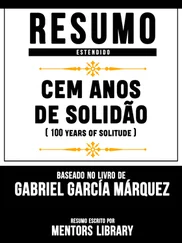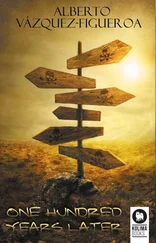“But it’s been led for so long by immigrants, Jewry, and Freemasonry,” the other chided.
Later, Morstauf told me that this man dreams of becoming a government minister. He also said that he himself was approached by Abel Bonnard to direct a new Franco-European cultural center. The symbol of his broken face in the service of peace would be rather striking. 28
Starting in the 1930s, the veterans of World War I on both the French and the German side were called on to help with Nazi German propaganda, such as during the creation of the France-Germany Committee, which the Groupe Collaboration took over during the Occupation. Abel Bonnard (1883–1968), who had been the Minister of National Education and Youth since April 1942, was an active member of the Groupe Collaboration.
June 5, 1942
Mathematical work and walks around Paris. Went to the Rive Gauche Buchhandlung, a bookstore very well placed on Boulevard Saint-Michel, at the corner of Place de la Sorbonne, with its pretty windows. Our soldiers can find things to read there and our university libraries can get what they need. A French writer, a tall blond man with black-rimmed glasses who was missing one arm, was signing his books. Probably another wounded soldier from the last war. Lots of them have sided with peace. 29
It has not been possible to identify this writer. On the exploitation of the “ gueules cassées ,” or “broken faces,” see previous note.
In the evening, dinner at Morstauf’s place in Chatou. I managed to find a car and get a solider to drive me there. Morstauf makes the journey by train almost daily. Since he has to be back before the curfew, his days in Paris are rather short. Huge house right on the Seine, well-kept garden. My rosebushes must also be in bloom. The whole family was assembled in my honor. Morstauf has five daughters and one son, born between 1918 and 1924, whom he presented to me one by one, from the oldest, there with her doctor husband and expecting her first child, all the way down to the youngest, the only boy, who is 18 and is preparing for the École Normale Supérieure entrance exam. Morstauf would have preferred the Polytechnique, but the boy likes biology. Marguerite Morstauf, the lady of the house, has hardly changed since 1939 (I hadn’t seen her since then). She’s a stout woman who doesn’t seem very happy but takes care of absolutely everything. What would we be without our wives? She showed me the notebook in which she writes down the menus for the dinners she gives, opened to the page corresponding to my last visit, for which there had been saddle of lamb with chilled fruit for dessert, and in the margin, she had written “ dîner épatamment réussi ” 30(I didn’t recognize that adverb). The dinner was quite a success this time as well, in spite of the restrictions. 31“My wife’s father was a well-known Catholic poet,” Morstauf had told me in 1939, “named Albert Janvier.” At the time, I didn’t dare say I hadn’t heard of him. But I’ve learned about him since. They’re a respectable family. Madame Morstauf was a cousin of Saint-Bonnet’s. 32The children are well raised and speak German adequately. They’re very Catholic. We even said grace before and after dinner.
In French in the original text.
The Morstaufs had a rather high income, resulting in part from the multiple positions mentioned in note 17, but mainly from Marguerite Morstauf’s fortune inherited from her parents. This affluence and their property in Normandy surely allowed them to procure foods from the black market without difficulty.
Paul de Saint-Bonnet (1870–1941), a mathematician who specialized in differential equations and a member of the Academy of Sciences and the French Academy, was a first cousin to Madeleine Janvier (1871–1933), the wife of the poet Albert Janvier (1860–1910).
After the meal, we smoked our pipes under a linden tree. In addition to butter and sugar, I had brought a provision of tobacco that I gave them. 33Morstauf talked to me about the arrival of the Staatsoper in Paris last year and the French soprano Germaine Lubin as Isolde, surrounded by all those German artists. 34He said it was the collaboration in action. He had listened to Tristan on the radio because of the curfew. The next time I come to Paris, I’ll try to take him to the opera. We discussed his upcoming trip to Germany, specifically to Berlin and maybe N. Last fall, a whole group of French writers came to Weimar, then there were musicians in Vienna, and those actors we met yesterday at the German Institute who were in Berlin in March. Why don’t you organize a trip like that for scientists, he asked me? 35Our administration certainly has some bureaucratic red tape, but I’m hopeful that the matter of his invitation, which has been dragging on since the war started, will soon be resolved: it’s already been a year since he went to Vichy to ask for all the official authorizations.
Tobacco was rationed in Germany starting in February 1942. As his letters indicate, Kürz had a rather sizeable reserve of it, which he had procured during a trip to Holland a few months earlier.
The Staatsoper (Berlin State Opera) had given performances, notably of Wagner’s Tristan and Isolde , a year before, on May 22, 1941, for an audience of German officers, under the direction of the young conductor Herbert von Karajan (1908–1989). These performances, broadcast by Radio Paris, were a huge success.
German propaganda had organized trips for groups of French musicians, painters, writers, and actors, but not one for scientists.
In the car on the way back, my mind wandered to genetics. The father has brown eyes, the mother has blue eyes, the six children have blue eyes. I tried to remember the children’s names: Thérèse was the oldest, there was a Bernadette… Ignace was the boy (their names were all very Catholic), there was also a Marie. But the two others? I asked myself the kinds of questions you ask when you’ve had a little too much to drink. If they’d had a son first, would they have had six children? If they’d had a sixth daughter, would they have had a seventh child? Did he fly into one of his famous fits of rage every time his wife gave birth to another daughter? I also thought about the fact that Morstauf, who’s just three years older than I am, will soon be a grandfather, while my Charlotte is only fifteen.
June 6, 1942
I went to Ranvier’s on Rue du Vieux-Colombier. 36I found him in the company of a short, lively man with round glasses. Neither one seemed delighted at my arrival. The man, whom Ranvier called François, thanked Ranvier for his article, said “Don’t make a fuss over me, I’m leaving,” and dashed off with his arms full of papers. It was only when he left that Ranvier apologized for not having introduced us. Too bad: that François must have been a mathematician, I could have recruited him. 37
Gabriel Ranvier (1906–1978) was an assistant professor of mathematics at the Sorbonne. This could have been François Le Lionnais, who, besides his activities as a member of the Resistance, was researching articles for a book on mathematics that would appear after the war.
Ranvier suggested we go to a café on Place Saint-Sulpice. It was there, on the terrace, that we met up with Quesnay. 38Ranvier and Quesnay are already working on our journal, and I was hoping that they were planning to recruit new reviewers as well. But Quesnay’s brother has been a prisoner for two years now and Quesnay is very disappointed that, despite his collaboration with us, his brother has still not been freed. I reminded him of the steps I’ve taken to help his brother get books on the Roman Empire. Quesnay didn’t deny that his brother’s situation has improved. Then Quesnay said he had another meeting and left. He may have been telling the truth.
Читать дальше












